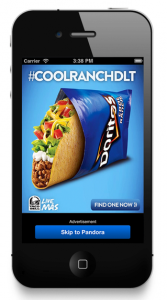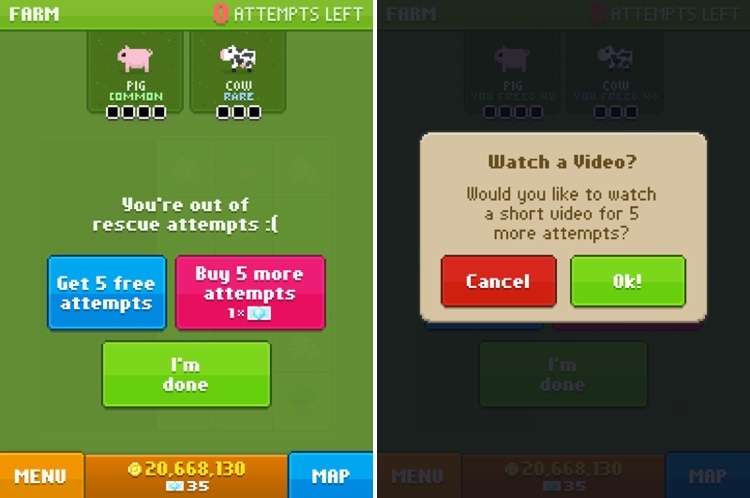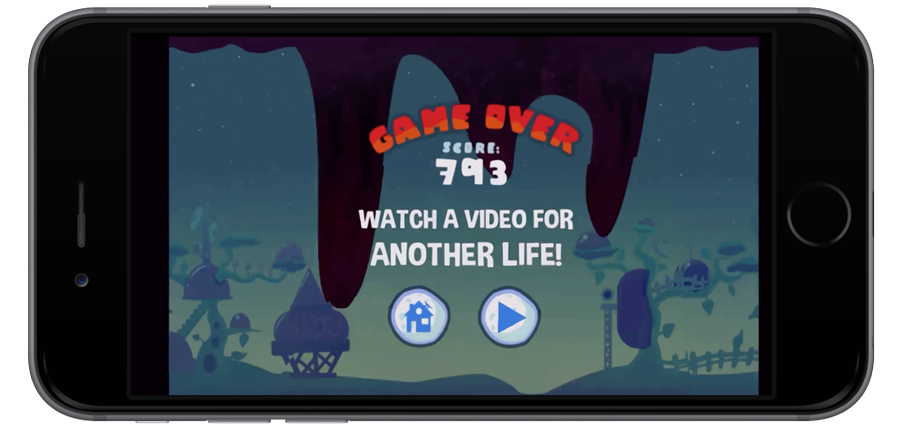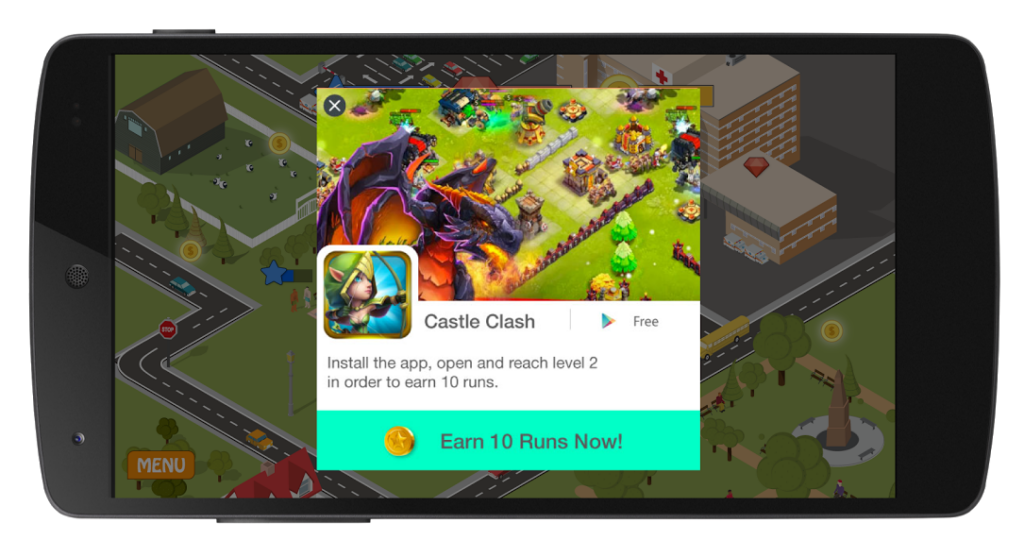· 10 min read
No Mobile Ad Blindness: Making Sure Users Actually Open Their Eyes And See Your Ads
Jacqueline Zenn
Content Crafter at GameAnalytics
Ads are a part of daily life for pretty much everyone, and in most cases, we’re probably all pretty good at tuning them out. Whether it’s a TV commercial, a billboard, a banner ad on a website, or a pre-roll message on a video or podcast, the various ads that we’re bombarded with probably barely register for most of us, eventually causing ad blindness.
While ad blindness might be a good thing in your personal life (who wants to view advertising on purpose, really?), it’s definitely not a good thing for game developers who rely on clicks and perhaps affiliate marketing as well. With that in mind, how do you optimize your ads for actual productive views and engagements, while keeping mobile ad blindness to a minimum?
What Is Mobile Ad Blindness?
Let’s start with understanding what ad blindness actually is, and what it means for your game. Even if you’ve never heard the phrase “ad blindness” before, there’s no doubt you’re familiar with the concept even in your own gaming and web browsing experiences. We’re all so used to seeing ads – especially in certain spots, like the common banner positions on websites or as interstitials in apps – that we naturally tune them out and even through the advertisers received a view or impression, the ad didn’t register for the viewers and it essentially didn’t count at all.
[bctt tweet=”How do you optimize your ads for actual productive views and engagements, while keeping mobile ad blindness to a minimum? @Jazspin explains all for @GameAnalytics.” username=”@GameAnalytics”]
Even though a user tunes an ad out, the impression might still be counted – but there will be no further value for you, the developer. Minimizing mobile ad blindness needs to be done through delivering the types of ads that provide the sort of user experience that drives engagement. This can differ by the type of game you’ve created, its user experience, and the expectations, region, and demographics of your audience.
It’s Not (Always) The Ad, It’s The User Experience
In many ways, the ad creative itself doesn’t necessarily matter as long as it’s not blatantly offensive, gross, or overly interruptive, and it fits into the overall user experience and flow of your game. The type of ad you deliver actually matters much more. There are a wide variety of mobile game ad formats and types to choose from, depending on the advertising partners and networks you work with.

For example, video or static interstitials between levels or right after battles? Perfect, it’s about time for a break in play. View-to-play ads are similar but can pop up before the user even gets into the game, and becoming even more popular in recent years. Another common format is expandable ads; these don’t take the user out of the game, but they do allow for the user to see more if it’s a product or brand they are interested in learning more about.
Standard banners tend to be easy enough to implement in-game, although some users will often ignore them, as they’ve learned to do over time. However, in some cases these may work, especially for campaigns where impressions are one of the KPIs. On a similar note, “around game” static ads or banners on the opening or loading screens are useful as well, but perhaps also subject to the same ad blindness issues as more standard banners.
Analyzing how the various types of ad formats can fit into your game’s user experience is one of the key steps you can take when monetizing your game; next is learning which types – and which advertising partners or networks – generate more clicks and engagements.

Types Of Ads More Likely To Generate Engagement
Some types of ads, like video ads or interstitials – or video interstitials – are more likely to generate engagement by their very nature, since they distract or even stop the user from game play and force them to participate or view the ads. Requiring participation is not always a bad thing, if done at the right time, such as during natural breaks between levels or after battles, races, or similar activities are completed.
Incentive-driven ads – or ads that give the users a reward like special loot, extra points, or some other reason to view the ad, watch the video, answer a question, or otherwise engage – tend to be an excellent way to combat ad blindness, since the user has a reason to connect with them to begin with. View-to-play ads work in a similar fashion, but you can perhaps get the users to view an ad before they even begin to play your game, which works better once they’re “hooked” or have formed a habit around it.
[bctt tweet=”Analyzing how ad formats can fit into your game’s user experience is a key step when monetizing your game; here are some tips to avoid Ad Blindness and optimize your advertising.” username=”GameAnalytics”]
Depending on the types of games that you create, there’s also the option of advergaming (or a game that that’s sponsored by a single brand – essentially the gamification of marketing) or even in-game product placement or contextual advertising, depending on your partners and the style of your game itself. This tends to require closer partnerships with brand advertisers (you’re going to be unlikely to do this through a simple network) but it’s definitely something to look into if you have a popular game where this tactic might be appropriate.
So, how do you choose the ad formats that will lead to the ideal results for your game? It all comes down to understanding what your players want…

Know Your Audience
Different types of audiences tend to prefer different forms of advertising. For instance, video ads tend to resonate more with some players (if only because they are more eye-catching), while pop-up ads are nearly universally reviled.
Interstitials can often be tolerated depending on the type of game you’re offering, as players tend to expect some kind of interruption, especially in an F2P game; ads are a necessary evil if they want it to stay free, and most users understand that nowadays.
The types of ads that your audience prefers may also depend on the region they’re in, and accordingly the costs of data, the cost and availability of smartphones, and decent bandwidth. For instance, 40% of Indians prefer video ads – and out of this total, 28.7 percent watched mobile ads for winning credits in games, 25.5 percent while shopping online, and 23.6 percent for product related information.
While this data only applies to India, one can extrapolate that what works for that massive population might also work in other regions, especially ones with similar booms in smartphone usage and relatively cheap data plans.

The Importance Of Diverse Ad Types And Partners
There’s sadly no one correct answer or catch-all solution for mobile ad blindness, so how should you, the developer, react? The best course of action could be to diversify your ad options and optimize further by testing what works and reviewing it repeatedly, which is where a solid analytics set-up and corresponding collection of dashboards is essential. Moreover, using a variety of ad types and partners while testing and reviewing your results will help you get to know your audience and what types of ads appeal to them in order to better tailor your in-game advertising for success.
Trying a variety of ad types and then constantly refining them and promoting the ones that actually generate engagement is the real key to dealing with the mobile ad blindness that affects us all from time to time.

As Well As Diverse Ad Networks
All ad networks are not created equal. Choosing your ad network partners carefully is essential. Make sure to look for ones that have high quality ads that you can tailor – and blacklist unwanted brands or sites if necessary. Constant testing and optimizing for the ad creative or the partners that perform the best is another key step towards combatting the mobile ad blindness issue.
In fact, maintaining ad network diversity and constantly testing and optimizing might be one of the more important things things you do to prevent mobile ad blindness – and making your advertising efforts successful in general!
Three Mobile Game Ad Elements That Lead To Success
In general, the types of ads that generate the best results – and the least mobile ad blindness – tend to do these three things…
- They don’t intrude on the in-game experience
- They do not interrupt the flow of the game
- They need to be relevant to your user’s interests.
The first is obvious – intrusive or overly disruptive ads tend to turn users off (or at least encourage them to turn on their ad blockers). Ads also need to fit with the flow of the game, like video or static interstitials or incentive ads being placed between levels or after a particular quest as been completed, but never in the middle of a level or task.
Next, you need to make sure your ads are least somewhat tailored to your audience’s interests if you want players to engage with them, and that all comes down to knowing who is playing and constantly optimizing and reviewing ad performances in order to better choose advertising partners.

The Single Most Important Thing To Remember (Or: What’s Worse Than Ad Blindness)
All of the aforementioned tactics and ideas are well and good, but there is one thing that’s absolutely key to remember when it comes to your in-game ads. Mobile ad blindness is real and making sure your users actually engage with your ads is important, but what’s even more essential is not taking them out of the game in the first place.
It’s pretty basic – you don’t want to kick users out of your game just to view an ad or engage with it; always open in a new window and pause things so they can come back to the game if they are either interested in the ad or tap on it accidentally. Kicking them out might be worse than them being blind to your ads altogether! That said, carefully chosen ad formats that don’t affect the in-game experience and that are relevant to your users’ interests, combined with ongoing analytics assessment and optimization, will go a long towards towards successful results and minimizing mobile ad blindness in your game.